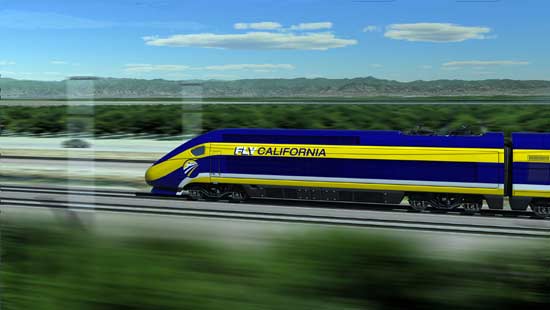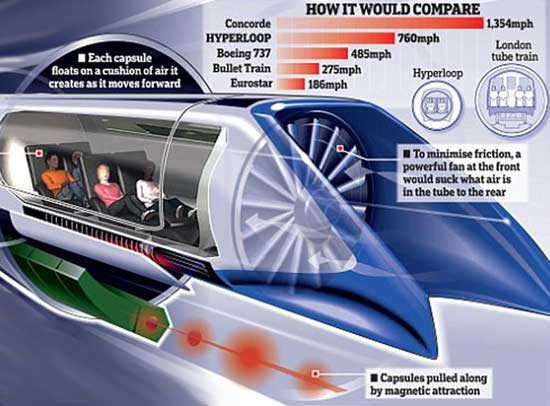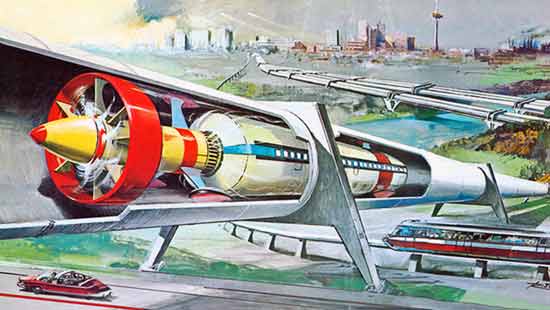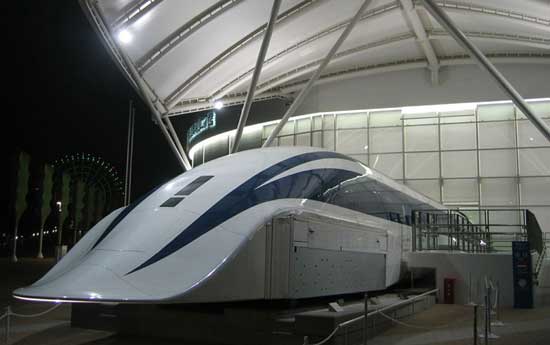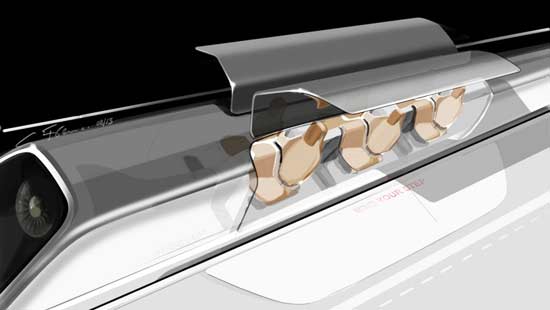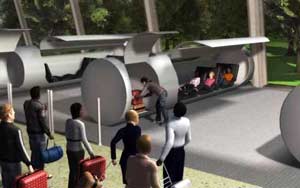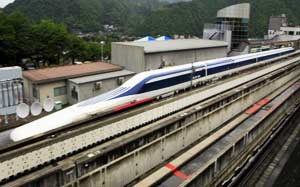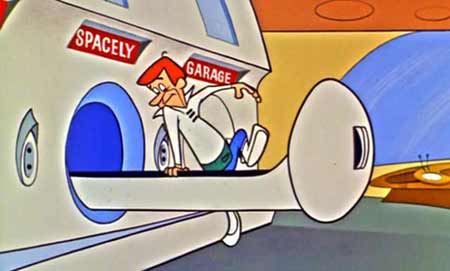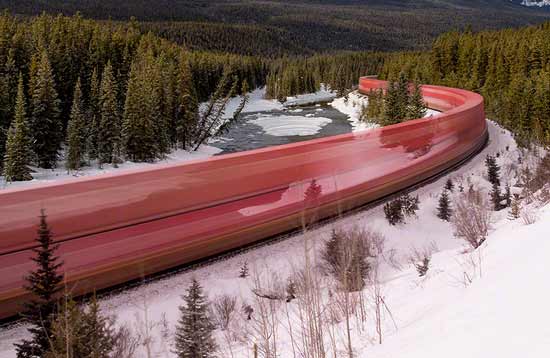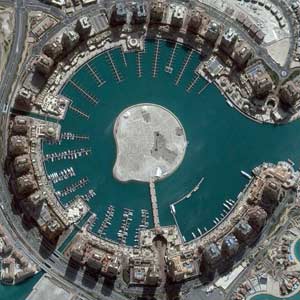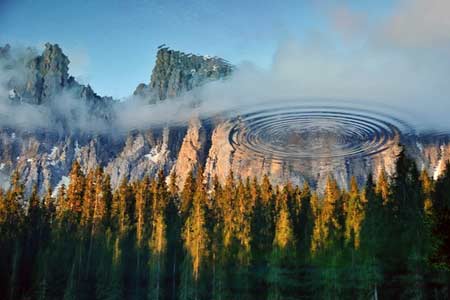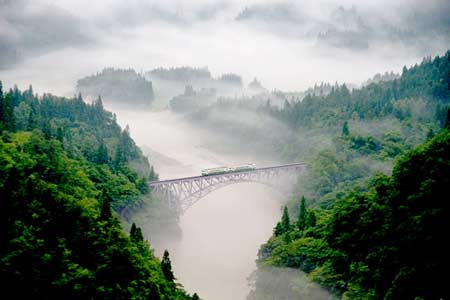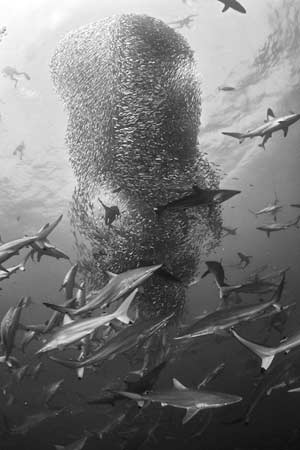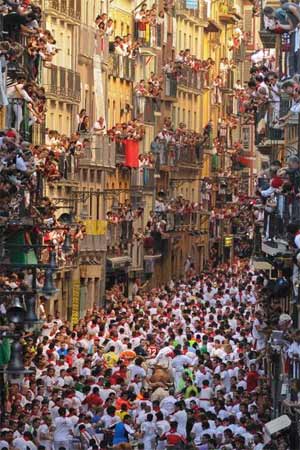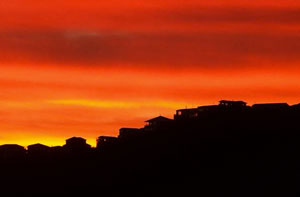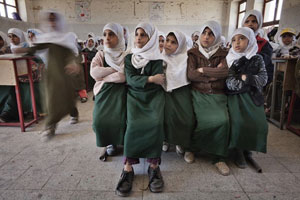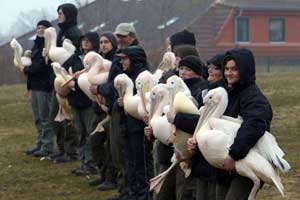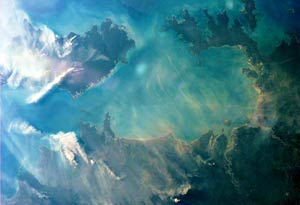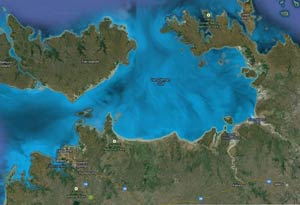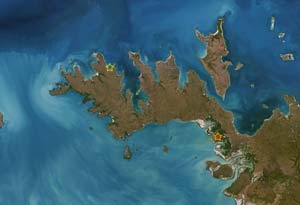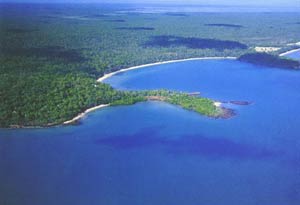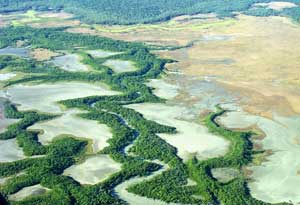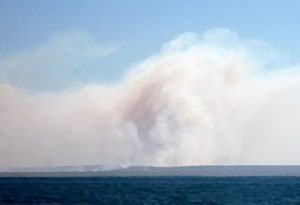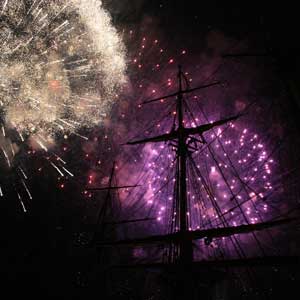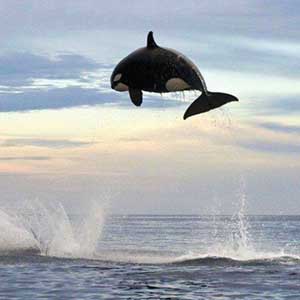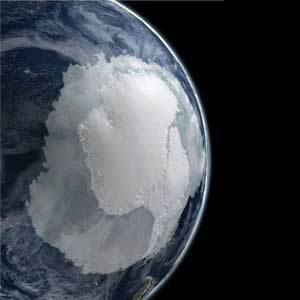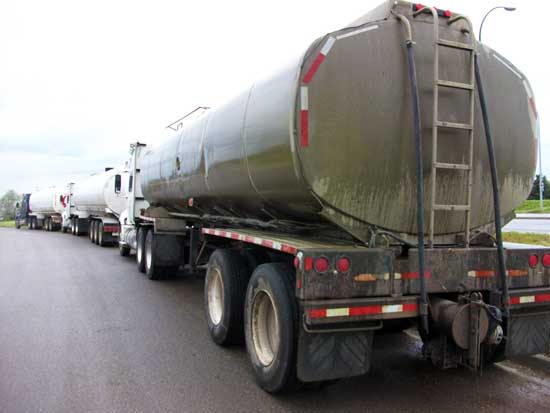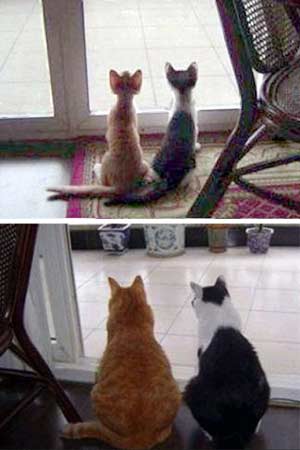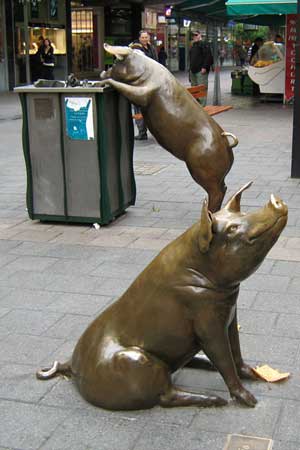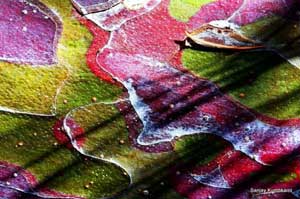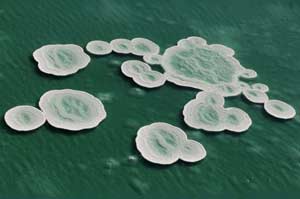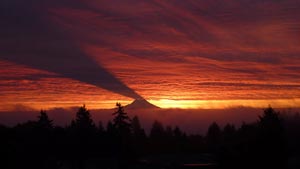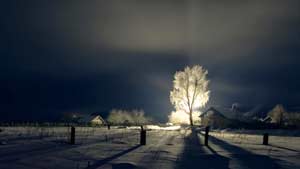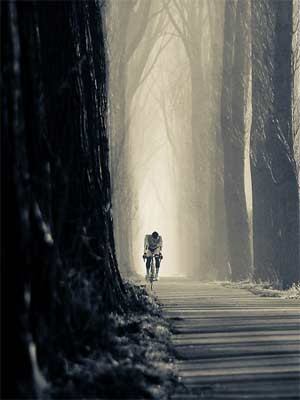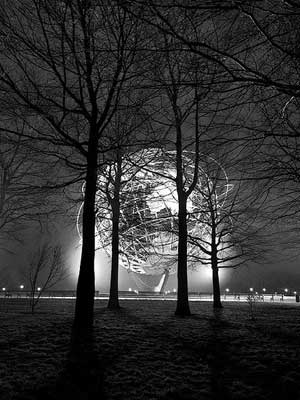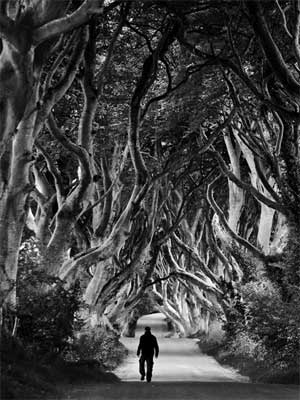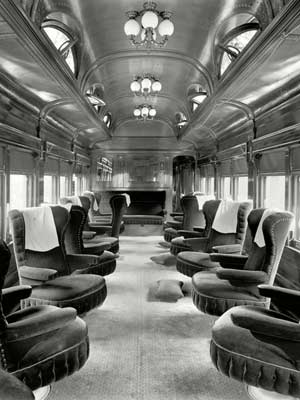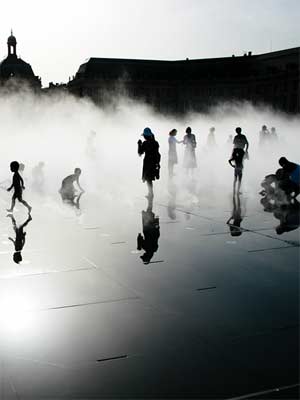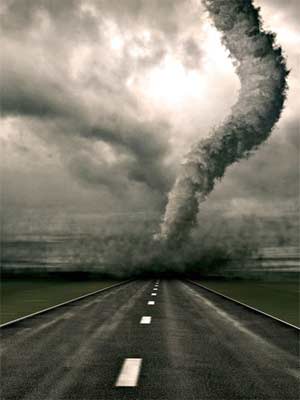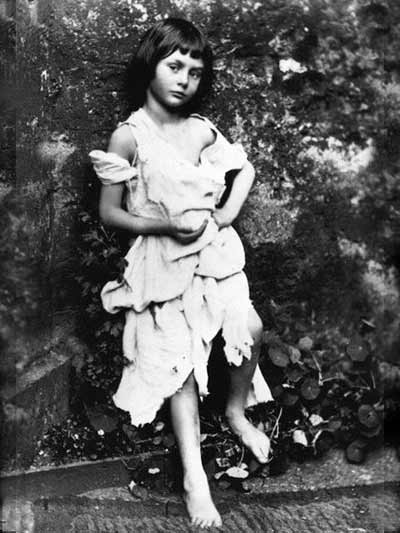Speed provides the one genuinely modern pleasure.
—Hyperlooping to Los Angeles
Jan. 15, 2014
So What WAS California’s Big Transportation Idea That Now Seems a Non-starter?
I don’t know who came up with the name Hyperloop, but I hope they were paid well for it, because it’s a great one…
In 2012 California legislators allocated $7.7 billion to a project called California High Speed Rail (CHSR), whose estimated cost for the first segment (of many) was $31 billion. When the whole is completed (if indeed it ever is) it’ll connect San Francisco to Los Angeles, with branch lines to Sacramento and San Diego. The budget suggests the full finished first segment will eventually cost a total of $68 billion for 210 kilometres (130 miles) of track between Fresno and Bakersfield. But the money allocated for even the most optimistic cost estimate for this segment isn’t nearly enough for the project to continue. Funding has been a mess since the project was first proposed in 1996. In November 2013, a Sacramento judge indefinitely blocked the authority’s access to $10 billion in state bonds, saying the rail’s latest modifications have strayed too far from what voters approved in 2007 (Proposition 1A). But there are far more problems than just a lack of funding. The federal Surface Transportation Board rejected a request to allow start of construction before an environmental review was completed on a 114-mile stretch between Bakersfield and Fresno. Decades of fits and starts involving lawsuits, poorly-chosen alternative routes, environmental studies, political deals, funding shortfalls, and a state-wide ballot now all seem to be for naught. The time may finally have come for one of the nation’s most ambitious and expensive public infrastructure projects either to zoom ahead or to finally leave the track.
Is the CHSR project the best use of any (as yet to be raised) funds meant to help solve California’s pressing transportation needs? One financial handicap is that for this particular project, private funding isn’t an option. Proposition 1A prohibits the project from receiving operating sponsorships from private interests. Anyone looking to make money probably wouldn’t invest anyhow—the current CHSR route was established by political pressure and self-interest (it moved from beside Interstate 5 to instead run along Route 99 in the central valley). It’s been deemed unprofitable by most corporations and business owners. Its highly-inflated ridership estimates are being questioned and costs are already spiralling out of control. Even so, some mega-rich progressives might wish to donate the needed funds—except that they can’t because Proposition 1A forbids it. This initial section of line is more than an hour outside of San Francisco and it ignores the most popular destinations along its route. The short distances between many of its stations mean the trains will rarely be able to reach their planned top speed of 350 kilometres per hour. So why continue?
If this project folds, does anyone have a better idea?
Actually, perhaps someone does…
Who Is It with a Different Idea? (Several People, Actually, but We’ll Start with This One)
Elon Musk is a South-African-born Canadian-American engineer, business magnate, investor, and inventor who’s currently Chief Executive Officer and Chief Product Architect of a maker of electric cars (Tesla Motors). But his first commercial success was as a co-founder of PayPal. He provided the initial concept for SolarCity, the largest provider of solar power systems in the US, where he remains the largest shareholder and Chairman of the Board. And Musk is currently Chief Executive Officer and Chief Technology Officer of Space Exploration Technologies (SpaceX), developer and manufacturer of space launch vehicles with a focus on advancing the state of rocket technology. SpaceX’s spacecraft will replace the cargo transport function of the Space Shuttle (his corporation was the first private company to take cargo to the International Space Station) and in the future SpaceX may also replace the Soyuz for astronaut transport. Musk’s personal goal is to eventually enable human exploration and settlement of Mars.
Jon Favreau, director of the Iron Man movies, says Musk was the inspiration for his film depiction of genius billionaire Tony Stark. The SpaceX factory was used as a filming location for Iron Man 2, and Musk has a cameo in the movie. Moreover, he’s the father of 5 sons comprising one set of twins and one set of triplets. (Musk does nothing by halves.) He’ll be 43 in June 2014.
What Idea of Musk’s Relates to California’s High-speed Train Problem?
The Hyperloop is a conceptual high-speed transportation system that incorporates a pair of reduced-pressure steel tubes in which pressurised capsules ride on cushions of air driven by a combination of linear induction motors and air compressors. (Linear motors, the same technology used in maglev trains, are just like regular electric motors but are cut open and laid flat.) Electromagnets embedded in the track create waves of magnetic fields that propel capsules down the tube. Booster motors every 110 kilometres keep the speed up. The Hyperloop’s proposed route runs from the Los Angeles region to the San Francisco Bay Area, paralleling the Interstate 5 corridor for most of its length, with an expected journey time of 35 minutes, meaning that passengers would traverse the 354-mile (570 kilometres) route at an average speed of approximately 600 miles (962 kilometres) per hour, with a top speed of 760 miles (1,220 kilometres) per hour—faster than a jet. (The CHSR on the other hand is proposed to take more than 2½ hours.)
On reaching its destination, the pod will pass through a motor that works in reverse to the accelerating linear motors, converting kinetic energy back into electricity for storage in batteries or use in motors up the line. The capsules are (nominally) proposed to be 2.23 metres (7 feet 4 inches) in diameter for the passenger-only version. Plans call for the Hyperloop track to be elevated on pylons so as to avoid traffic and complicated land purchase issues. Capsules would leave stations every 30 seconds, each carrying 28 passengers (assumed to weigh 220 pounds each including luggage). Pods would have wheels that could be deployed if needed, allowing them to limp to their destinations using batteries if the power fails (meaning your trip could take hours, though it is hoped this is an extremely infrequent occurrence). Completion of the project would take 7-10 years.
Musk has likened the Hyperloop to a blend of the Concorde, a railgun, and an air hockey table. It can work either below or above ground. From late-2012 until August 2013, an informal group of engineers at both Tesla and SpaceX worked on the conceptual foundation and modelling, allocating some full-time effort to it toward the end. An early design for the system was then published in a whitepaper posted to the Tesla and SpaceX blogs. Musk invites feedback to “see if people can find ways to improve it”; it’ll be an open source design, with anyone free to use and modify it. He subsequently announced a plan to construct a demonstration of the concept. Specially designed “capsules” or “pods” are sent through a continuous tube maintained at a partial vacuum. Each capsule floats on a .5-1.3-millimetre (.02-.05 inch) layer of air provided under pressure to air-bearing “skis” (similar to an air hockey table’s suspended pucks) thus avoiding the use of maglev while still allowing for speeds which wheels can’t sustain. Linear induction motors located along the tube accelerate and decelerate capsules to an appropriate speed for each section of the route. With rolling resistance eliminated and air resistance greatly reduced (air is pumped from the tubes down to 100 pascals, or 1/1,000th of air pressure at sea level), the capsules are theorised to glide for the bulk of the journey. In the Hyperloop concept, an electrically-driven inlet fan and air compressor would be placed at the nose of the capsule in order to “actively transfer high pressure air from the front to the rear of the vessel,” resolving the problem of high speed transport in a tube that is not a hard vacuum, because pressure would otherwise build up in front of the vehicle, slowing it down. A fraction of the air is shunted to the skis for additional air pressure, augmenting what is gained passively from lift due to shape.
Air output from the compressor is cooled to around room temperature mainly by converting water to steam and hot water in an intercooler. Once cooled, the air enters a second compressor, which increases the air pressure and sends it through a second intercooler that reduces its temperature to about 125ºC (260ºF), from which it is directed to supply the air bearings. For a one-way trip from end to end, about 400 kilograms (882 pounds) of water must be available for cooling. This would fit within a square tank less than 0.75 metres (2.5 feet) on a side, easily fitting in the Hyperloop capsule. These tanks, along with the batteries powering the capsule systems, are configured as modules to be swapped out at the beginning of each trip.
Has Musk indeed identified a “sweet spot”?
The Hyperloop is built from aluminium capsules that travel in a pneumatic pipeline built from steel cylinders 6 metres high that are supported aboveground by tall pylons. Studies will be conducted to ensure high safety standards in case of an earthquake. Hyperloop won’t use propellants from fossil origins, but green energy, produced thanks to photovoltaic panels installed along the entire route. The panels are capable of producing up to 57 megawatts of power, even more than is required to power the train. The compressor is fuelled by more than 2,500 kilograms of batteries. Its output will be employed in part for the levitation and in part for the propulsion, thanks in part to the expulsion of that air through the skis and out the rear.
What Is the Backstory?
Not, perhaps, the most efficient design.
In 1812 British mechanical engineer and inventor George Medhurst wrote a book detailing his idea of transporting passengers and goods through air-tight tubes using air propulsion. London’s Crystal Palace pneumatic railway operated around 1864 and used large fans, some 22 feet (6.7 metres) in diameter, that were powered by a steam engine. The tunnels are now lost but the line operated successfully for over a year. One of the first high-speed trains, the Empire State Express No. 999, reached a claimed 112 miles per hour in 1893. Ten years later, an electric train in Germany hit 131 miles per hour, fast enough to be considered officially high-speed by today’s standards. In the 1910s, vacuum trains were first described by rocket pioneer Robert Goddard. His train would hurtle through hermetically sealed tubes from which the air has been evacuated. The trains would thus encounter no drag, and be able to reach immense speeds. Goddard’s design also proposed magnetic levitation instead of wheels and was estimated to achieve speeds of 1,600 kilometres per hour. None was ever built because maintaining a vacuum in a long tunnel is difficult and expensive. (Pumps have to work exponentially harder as the pressure falls.) A detailed technical vision with speeds up to 14,000 miles an hour and a complete economic and financial analysis for maglev transportation in underground tubes was prepared by the Rand Corporation in 1972. Had Richard Nixon, the then president of the US, green-lighted it and had Congress also funded it, the US may have had far less pollution, trillions of dollars saved from road construction, cheaper and faster travel, and less death and damage from road and air accidents.
While the Hyperloop has significant innovations over early proposals for reduced-pressure or vacuum-tube transportation apparatus, the work of Goddard appears to have the greatest useful overlap.
Swissmetro had a proposal to run a maglev train in a low-pressure environment and concessions were granted in the early 2000s to connect the Swiss cities of St Gallen, Zurich, Basel and Geneva. Studies of commercial feasibility reached differing conclusions and the vactrain was never built.
Developments in high-speed rail (and high-speed transport more generally) have historically been impeded by the difficulties in managing friction and air resistance, both of which become substantial when vehicles approach high speeds. The vactrain concept theoretically eliminates these obstacles by employing magnetically levitating trains in tubes kept at a complete vacuum, allowing for theoretical speeds of thousands of miles per hour. The high cost of maglev, however, and the difficulty of maintaining a vacuum over large distances, has prevented this type of system from ever being built. The Hyperloop resembles a vactrain system but operates at approximately one millibar of pressure.
What Are Some of Its Advantages?
A prototype of Japan’s superconducting maglev (magnetic levitation) train has superconducting magnets (which help to both propel and levitate the train) located behind the large boxes on the sides.
Today, many train lines zip passengers between cities at speeds up to 186 miles per hour. Some experimental trains, like the current world-record holding TGV, have even exceeded 350 miles per hour. But for practical purposes, 186 miles per hour may be the upper limit for conventionally wheeled trains. One look at video footage inside the cab of the record-breaking TGV reveals why—its great speed magnifies vibrations from minor imperfections (much like the lives of some short-lived celebrities). Vibrations of that intensity are manageable for short runs, but over years of service and thousands of trains, wear-and-tear takes its toll. The pounding of wheels on the rails accelerates deterioration.
An obvious successor is maglev, which could achieve higher speeds with lower maintenance costs. Maglev trains float above their tracks, suspended by a magnetic field. Perhaps the most striking fact about maglev is that, unlike traditional wheeled trains, motive force can be provided by the tracks themselves rather than the train. On the Japanese maglev, for example, electromagnetic propulsion coils sit in the sides of the U-shaped track, behind the levitation coils. Superconducting magnets on board the train are attracted to coils of the opposite pole and repelled by coils of the same pole. As the train moves, the track-mounted coils flip their polarity, producing waves of attraction and repulsion that keep things moving. Japan’s maglev is estimated to cost about $191 million per kilometre, compared with an average of around $24 million per kilometre for traditional high-speed rail. However, that figure doesn’t take maintenance into account. Because it floats on air, it’s more expensive to construct. However, it requires less maintenance and has lower ongoing costs afterward. The only friction a maglev train encounters is wind-resistance. Other than streamlining engine and car shape, can wind resistance be overcome? Yes—by using low pressure tubes…
The Hyperloop has frequently been compared to a proposed mode of transportation called a vactrain, which is short for vacuum tube train. In fact, the Hyperloop’s only major difference from other vactrain concepts is its air cushion suspension. Swissmetro’s (now dormant) planned maglev train would have run in low-pressure tunnels to connect major cities in Switzerland. It was designed to run at about 1/10th atmospheric pressure, which is a great deal higher than Hyperloop and much easier to achieve (although apparently not easy enough that it actually got built).
This chart has a train consuming nearly 900 megajoules per person for an LA-San Francisco trip—slightly more than a plane; this is about 1,300 kilojoules per passenger per kilometre. Energy consumption for high-speed rail in Spain is on average 263 kilojoules per passenger per kilometre, about 1/5th as much as shown. A train with 1,000 seats, 20 megawatts of power drawn, 60% seat occupancy, and a speed of 360 kilometres per hour would expend 333 kilojoules per passenger per kilometre while accelerating and much less while cruising (acceleration at a lower speed requires more energy per unit of distance but cruising at lower speeds uses less).
Immunity to weather, pods that never experience crashes, an average speed twice that of a typical jet aircraft, low power requirements, and the ability to store energy for 24-hour operations are some of Hyperloop’s advantages. It would be solar-powered. It would take less land than a high-speed railway (HSR). It would be cheaper, Musk says. His notional budget is around $6 billion, less than 1/10th of what the high-speed train (HST) is supposed to cost (though this low estimate is one of his most-disputed points). Its small profile and elevated nature would enable it to be constructed primarily in the median of Interstate 5, though curves in the roadway would mandate deviance—at the speeds pods travel, curves must be almost undetectably gentle, maximising cant (tilt). Nausea is perhaps a concern because there are no windows and one can’t walk around or visit the toilet. The low profile reduces tunnel-boring requirements; the light weight of the capsules (versus a train) should certainly reduce construction costs. The design paper asserts less right-of-way opposition and environmental impact due to its small, sealed, elevated profile versus that of a high-speed rail easement. (Though some dispute that opposition will be reduced—it’s California after all.) The Hyperloop white paper suggests that US$20 taken from the cost of each one-way passenger ticket between Los Angeles and San Francisco (however much the operators is decide to charge) would be sufficient to cover initial capital costs based on amortising Hyperloop over 20 years. Ridership projections were deemed to be 7.4 million per year each direction. That $20 doesn’t include operating costs (the proposal asserts electric costs are covered by the solar panels, but there’s still personnel and supplies).
As proposed, the Hyperloop would serve a similar transportation function as HSR and maglev but on a grander scale. If extensively adopted, Hyperloop could make jobs in major cities accessible from a vast region. You could, for example, live in Boston and commute daily to your job in Philadelphia. Couples could stay together even though they now work in different cities. University students trying to save money by living at home would have a much wider range of potential institutions from which to choose.
Plus, Hyperloop pods aren’t going to hit cows or cars or kids who happen to be on the tracks—because there are no tracks. Traffic won’t be held up waiting for pods to pass. You won’t need to stand in line to go through security, to board, or to wait (sometimes interminably) for take-off.
What Are Some of the Drawbacks?
The low pressure of the Hyperloop presents a problem when loading passengers. Any airlock system introduces a relatively important amount of air, intended or not.
While most of Musk’s proposed link runs down California’s relatively straight Interstate 5, there are instances where land must be bought or leased to make for those absolutely-required gentler turns. The 760-mile-per-hour capsules will probably make more noise than their steel tubes can contain. Musk and his team have suggested that only .5-1.3 millimetres of air need pass between skis and tube—tolerance in the tube becomes an issue at those speeds. Should a capsule become stalled, it’ll eventually lose air pressure inside. Oxygen masks will be supplied, but how long will they last? And what if, despite precautions, an earthquake ruptures a tube? At speeds of 700+ miles per hour, there’s no real chance of survival. But HSTs have the added risk of debris falling onto the track (think about the last flight of the Concorde).
In September 2013, a fluid dynamics simulation modelled the aerodynamics of a capsule and the shear stress forces it would be subjected to. This revealed the capsule needed a redesign to avoid creating supersonic airflow—the gap between the tube wall and capsule had to be made bigger. Arthur Kantrowitz was a renowned American scientist known for development of a theoretical concept of fluid choke points at supersonic and near-supersonic inlet velocities. His concept has become known as the Kantrowitz limit. Attempting to pass a high-speed pod through a very low pressure tube runs squarely into this fluid flow limit. Historically, the solutions to working within the limit have been “go fast” and “go slow”. A major innovation in the Hyperloop proposal provides a novel 3rd approach: to remain below the limit while still moving at high-subsonic velocities. This involved adding a front-end inlet turbine and compressor to actively transfer high-pressure air from the front to the rear of the high-speed transport capsule. This reduces the possibility of dynamic shock from choked flow. The flow in the smaller duct through the capsule is also subject to the Kantrowitz Limit, but this is relieved by increasing pressure and density so as to achieve required mass flow. This air-inlet pump also provides a low-friction air-bearing suspension system for travelling at over 700 miles (1,100 kilometres) per hour. The pod produces the air cushion rather than the tube, which helps to make the tube as low-cost and simple as possible. The heat is largely absorbed by a steam pot. Water and steam reservoirs are changed automatically at each stop. So 137.5 KWH of energy (as steam) is apparently released every couple of minutes at each terminus.
| I cram into a pod that’s 4.3 feet wide—2 feet narrower than my car. Then I recline way back because the ceiling is too low to stand up. (I’m guessing that means no toilets on board.) I look forward, but can’t see in front of me. Out the side, the tubes are solid metal. (They were glass in the visuals. Funny that.) But whatever. Nothing to see anyway and we’ll be in San Francisco in only 35 minutes. |
| I reach over to hold my partner’s hand, except I can’t, because a big chunk of the propulsion is between the seats, so I fold my hands across my chest to enjoy the G-forces which I’ll spend the next 35 minutes experiencing with no visual frame of reference. Thankfully, I haven’t eaten in several hours. But the guy sitting behind me thought it’d be good to get a couple of doubles before he boarded the pod and after 10 minutes of being underway, he spews. |
| Of course he can’t take the barf bag (at least there is one) to the bathroom because there isn’t one of those. So over the next 20 minutes two more people retch as the cabin fills with the smell of upchuck. When we arrive in San Francisco, my partner suggests maybe next time we just drive. I emphatically agree. |
Based on the 14 August 2013 16:13 Comment of Houston Houston
In October, an unfinished conceptual model showed the propulsion system was, in fact, feasible, although the tube diameter needed to significantly increase to 4 metres (13 feet), larger than originally envisioned. In November, an analysis of the route concluded that it was mainly feasible, though occasional deviations to maintain reasonable acceleration were mandatory. Near San Francisco’s east bay, planned speeds may require significant deviation into heavily populated areas. While terminating the Hyperloop route on the fringes of both starting and ending major metropolitan areas results in significant cost savings in construction, it requires most passengers to transfer to other transportation modes in order to reach final destination. This lengthens total travel time. So? Airports have a similar problem. Infrastructure grows to fill any new gaps.
But there may be a more serious concern: The proposed Hyperloop headway (time between pod launches) is 30 seconds. At 28 passengers per pod, that allows 3,360 passengers per direction per hour. A freeway lane can have 2,000 vehicles per hour, with an average car occupancy of 2 for 4,000 passengers per hour. HSR can accommodate 12 trains per hour, with each train easily holding 1,000 people (the Japanese system runs 14 trains per hour, each holding up to 1,323 passengers). So, to be competitive, the Hyperloop needs a 30-second launch window. Unfortunately, such frequent pod launches may not meet safety requirements if the system ever needs to shut downs. It’s tempting to presume that computerised control will allow vehicles to behave as if the distance between each always remains fixed. But if the system shuts down and the vehicles brake at a constant rate, the safe headway is half the total deceleration time. This means that if a vehicle must brake from 1,220 kilometres per hour to zero in 60 seconds, that’s twice the current regulatory safety limit for passengers with seat belts. (Yet you’re alive? For you, that’s the most important part.) If a pod speeds up and 30 seconds later the next pod speeds up (coming to the flat part of the central valley where they can go faster say), the pods will become more than 30 seconds apart. But when the first pod slows when reaching a subsequent more difficult terrain, it’s 30 seconds before the second pod slows, so conceivably they could be closer than normal for a bit, which could cause an occasional problem if the system stops. That’s when the small wheels and little motor drive your pod the rest of the way (perhaps hundreds of miles) because there’s no other way to get you or the pod out of that tube. (That may be a bit of a concern if you’re in labour or think you’re having a heart attack.)
But think about this: what would a highway look like if each vehicle was 30 seconds from the one in front? And “seconds” is a metric that takes into account speed—for a purely distance metric, 30 seconds at 750 miles per hour is 4.2 miles apart. Airplanes fly at similar speeds with a 3-mile horizontal separation when within radar range and they have human operators and have to deal with turbulence.
The Hyperloop will need much taller pylons than HSTs need due to its constrained ability to climb and descend. It has some unique risks. But planes crash, trains derail. Overall, is this a definite step forward? Maybe.
Are There Equivalent Alternatives?
- How would you like to be inside a bullet with 5 other passengers at the speed of a spacecraft? What if there were no bumps, no noise, no uncomfortable acceleration or braking during your 45-minute ride from LA to New York? And, what if the trip costs you a mere $100? ET3 (Evacuated Tube Transport Technologies) has a prototype of just such a system all ready to test. It may actually run a lot slower than 4,000 miles an hour (you need longer distances to achieve that speed and then decelerate), but it should demonstrate the viability of this technology. Musk says he believes ET3 is on the right track, but “misses” some key components. He says it’s incredibly hard to maintain a near vacuum in a room, let alone 700 miles (round trip) of large tube with dozens of station gateways and thousands of pods daily entering and exiting. All it takes is one leaky seal or small crack somewhere in hundreds of miles of tube and the whole system stops working.
- Beyond flat beds to lie on and slimline seats that give a little more room there are quiet zones, virtual classes, social flights, storytelling, connectivity, and cabin crew that act as concierges—in other words, desirable, innovative, and profitable ancillary products and services will be offered by your airline one day soon. But one thing to consider is that flight times are measured airport to airport. Hyperloop figures are measured suburb to suburb (starting in the East Bay of San Francisco and ending on the outskirts of LA). High-speed rail is counted from station to station and stations are commonly located in or near the downtown area.
- The Japanese government has promised to lend the US half of the cost of building the first “Super-Maglev” train, reducing travel time between Baltimore and Washington, DC to just 15 minutes. The 37-mile journey between Washington DC and Baltimore presently takes 1 hour by conventional rail link. Conventional Maglev technology is already in use on a number of short routes around the world, but is limited to speeds of around 267 miles per hour. Japanese “Super-Maglev” trains are already operating on test tracks at speeds of more than 310 miles per hour. A full 16-carriage train could carry 1,000 passengers.
The Jetsons episode entitled “Miss Solar System” first aired on 10 February 10, 1963. It featured a bit of everything: videophones, 3D TV, autonomous cleaning robots, moving sidewalks, and pneumatic tubes.
What Are the Chances of the Hyperloop Being Built and by When?
The CHSR has a tortuous history going back decades. Much political capital is invested in it. To replace it now with a completely different design would require an agility the likes of which California’s government is almost certainly incapable. Nor is there any reason to believe that the Hyperloop would be immune to the ballooning costs that every other grand infrastructure project seems doomed to suffer. Building it alongside existing roads would certainly be less complicated, but critics poring over Musk’s cost estimates doubt his numbers are accurate. While Musk has estimated the Hyperloop from San Francisco to Los Angeles will cost US$6 billion to build, others estimate it’ll be closer to $96 billion. (To be fair, both his electric cars and his space rockets came in on budget.) A few people suggest somewhere like Texas—where bureaucracy is less stifling—might be a better place for a prototype to be built.
Musk suggests he may personally build a demonstration prototype of his Hyperloop concept. Great. But why put it in California? I can’t think of a place that could use a Hyperloop any more than Australia, going from Sydney to Perth. I do hope someone builds one. I for one would love the chance to experience a trip—seating 50% wider than coach on an airline, more legroom, vastly less time inside, comparably priced, and with advanced infotainment systems.
I would like to die on Mars. Just not on impact.
— Elon Musk
Sources
http://en.wikipedia.org/wiki/Kantrowitz_limit#Kantrowitz_limit Arthur Kantrowitz from Wikipedia.
http://www.gizmag.com/hyperloop-musk-analysis/28672/ “Beyond the hype of Hyperloop: An analysis of Elon Musk’s proposed transit system” by Brian Dodson, Gizmag, 22 August 2013.
http://gas2.org/2014/01/08/california-high-speed-rail-authority-bond-funds-blocked/ “California High-Speed Rail Authority Bond Funds Blocked” by Christopher DeMorro, Gas2, December 2013 (exact date not given).
http://www.washingtontimes.com/news/2013/dec/23/california-high-speed-train-project-at-crossroads/?page=all “DERAILED: California’s high-speed train project going nowhere fast” by Valerie Richardson, The Washington Times, 23 December 2013.
http://en.wikipedia.org/wiki/Elon_Musk Elon Musk from Wikipedia.
http://upriser.com/s/upriser/posts/elon-musk-s-hyperloop-transit-system-proposal “Elon Musk invents Hyperloop transit system that’s a cross between a Concorde, a rail gun, and an air hockey table” by Colbeigh, Upriser, no date given.
http://www.highspeedrailcanada.com/2013/09/hyperloop-magline-and-jetsons.html “Hyperloop, Magline and the Jetsons” by Paul Langan, High Speed Rail Canada, 5 September 2013.
http://www.latimes.com/opinion/commentary/la-oe-flashman-high-speed-rail-california-20131216,0,3163870.story#axzz2nqHtG4zy “How to make high-speed rail work in California” by Stuart Flashman, Los Angeles Times, 16 December 2013.
http://www.teslamotors.com/sites/default/files/blog_images/hyperloop-alpha.pdf “Hyperloop Alpha” by Elon Musk et al, Tesla Motors, 12 August 2013.
http://www.economonitor.com/blog/2013/08/hyperloop-de-hyped/ “Hyperloop De-hyped” by Izabella Kaminska, EconoMonitor, 13 August 2013.
http://en.wikipedia.org/wiki/Hyperloop Hyperloop from Wikipedia.
http://www.powerclouds.com/index.php/hyperloop-the-photovoltaic-super-train/ “Hyperloop: the photovoltaic super train” from Power Clouds, 19 August 2013.
http://www.businessinsider.com/japan-wants-to-build-a-super-train-running-from-baltimore-to-washington-dc-in-15-minutes-2014-1?IR=T “Japan Wants To Build A 'Super’ Train Running from Baltimore to Washington DC in 15 Minutes” by Julian Ryall, Business Insider, 7 January 2014.
http://www.dailykos.com/story/2013/08/19/1232327/-Lies-Damned-Lies-And-Hyperloop “Lies, Damned Lies, And Hyperloop” by Rei, Daily Kos, 19 August 2013.
https://pedestrianobservations.wordpress.com/2013/08/13/loopy-ideas-are-fine-if-youre-an-entrepreneur/ “Loopy Ideas Are Fine, If You’re an Entrepreneur” by Alon Levy, Pedestrian Observations, 13 August 2013.
http://finchin.com/ny-to-la-45-minutes-elon-musk-the-future-of-travel/ “NY to LA 45 Minutes: Elon Musk & the Future of Travel” from finChin, 14 July 2013.
http://www.economist.com/news/science-and-technology/21583588-elon-musk-electric-car-entrepreneur-and-proponent-private-colonies-mars “No Loopy Idea” from The Economist, 17 August 2013.
http://www.pbs.org/wgbh/nova/next/tech/hyperloop-and-high-speed-trains/ “Promise and Perils of Hyperloop and Other High-Speed Trains” by Tim De Chant, PBS: NOVAnext, 13 August 2013.
http://www.futuretravelexperience.com/fte-global/up-in-the-air-conference/#conf “Redefining the End-to-End Passenger Experience” from Future Travel Experience Global, 2014.
http://www.rand.org/content/dam/rand/pubs/papers/2008/P4874.pdf “The Very High Speed Transit System” by R M Salter, Rand Corporation, August 1972.
http://www.entrepreneur.com/article/227807#!! “Why California Can’t Be Home to the Hyperloop” by Ray Hennessey, Entrepreneur, 13 August 2013.
http://www.et3.com/ “Why ET3?” by the ET3 Global Alliance from Evacuated Tube Transport Technologies: Space Travel on Earth, 2010-2013.
The Distillery
Pattern
- This photographer, Niki Feijen, is an artist who’s found great beauty in decay. These places were elegant once but are now disintegrating gracefully. There’s something subdued and peaceful about his work.
- This is an artificial island that spans over 4 million square feet. Here is a panoramic view from the ground. (I think it looks better from the air.) This is a satellite image taken by one of the DigitalGlobe’s 5 earth-imaging satellites in 2013.
- This is at the campus of Zhanjiang Normal College. The dormitory building was covered by quilts and clothes due to the sunshine after several day’s raining, the highest temperature had reached 27°that day.
Perspective
- Carezza Lake is a pearl of the Dolomiti. Nestled between an ancient forest of grand firs and the Latemar mountain is place of legends and beauty…a nymph lives under its emerald waters. A stone thrown into the water adds mystery.
- Floodwaters from the Elbe River inundate a yard with a swimming pool near 10 June 2013. Many communities were devastated.
- A train is crossing oes across the railway bridge through in morning mist. The train moves forward little by little slowly. I thought, this sight has expressed the Fukushima people defying to recover from the earthquake and nuclear accident. But it is the uncertain endless journey.
- Rhyzostoma pulmo and Cothyloriza tuberculata, two types of jellyfish, appeared in the northern Adriatic Sea at Treste, Italy in the summer of 2013. These two jellyfish were photographed underwater looking toward Miramare Castle located on the shore.
Flocking Behaviour: Birds, Fish, Mammals
- Robins gather waiting the ladies on a cool March morning.
- The Sardine Run is considered to be a spectacular wildlife event. The search for dive-able bait ball action can be long and hard, with no guarantees of being in the right place at the right time. Jumping into the water on a unique bait ball is a once in a lifetime luck. This bait ball was christened the Shark Ball. Normally a bait ball will escape fairly easily, but there were so many sharks and in such a tight grid, that every bait fish got eaten.
- Participants run in front of Alcurrucen’s bulls during the first bull run of the San Fermin Festival, a symbol of Spanish culture that attracts thousands of tourists to watch the bull runs despite heavy condemnation from animal rights groups.
Almost Human
- Princess Anne’s coronation outfit (worn when she was 2 in 1953) stands in the foreground, having paused in its daily walk around the grounds. Creepy. This is the Throne Room of Buckingham Palace in central London. Couldn’t someone at least have supplied a cardboard head? This looks a bit disturbing.
- Dennis Rodman is just back from a visit to North Korea with the Harlem Globetrotters basketball team and spent two days with Kim Jong-Un. The State Department on Friday distanced itself from Rodman’s visit. The trip took place amid strained ties between the US and North Korea over the North’s recent underground nuclear test. Rodman says, “He just want President Barack Obama to call him.”
- A bionic man complete with artificial organs, synthetic blood and robotic limbs has gone on display at the Science Museum in London. Costing some €600,000, he’s expensive but not as pricey as the Six Million Dollar Man of the cult 1970s TV series. The man, named Rex, can sense objects in front of him with retinal implants and he has cochlear implants to allow him to hear. He incorporates some of the latest advances in mechanical limbs, as well as a heart and lungs, an artificial pancreas, kidney, spleen and trachea, and a functional blood circulatory system. All of his components could theoretically be welded to a human body to replace missing or worn out parts. Rex stands 6.5 feet tall.
Atmosphere
- Sunset over Island Bay on 3 December 2013.
- Snow-capped peaks of the Continental Divide stretch across the landscape west of Denver, Colorado. From 86,000 feet the moon shines bright against the inky black of the stratosphere while in the foreground Interstate 70 carves its way up the valley toward high alpine passes and the famous ski resorts of Colorado.
- A complex lenticular cloud see from northern Tasmania near Spreyton.
Unusual Assortment
- Five Yemeni students sit on a bench at an elementary school in Sanaa in December 2012. According to UNICEF, getting access to education—even primary school—is one of the biggest challenges facing children in Yemen today, but especially girls. Nearly half of primary school-age girls don’t go to school. Two of three women in Yemen are illiterate. These girls could change that. Sad they don’t each have a desk, but they seem to have plenty of attention.
- I can find nothing about the origin of this photo. I like it, though. Anonymity, yeah. Still, I would’ve liked to know the occasion.
- Pelicans are to be released into their outdoor enclosure at the birds park in eastern Germany. These pelicans are prisoners.
Van Diemen Gulf, Northern Territory, Australia
- The Van Diemen Gulf lies in Northern Territories northern Australia between Arnhem Land on the attached Cobourg Peninsula, and Melville Island. It’s connected to the Timor Sea in the west by the Clarence Strait (near the city of Darwin), and to the Arafura Sea in the north by Dundas Strait (between Melville Island and the Cobourg Peninsula). It stretches over an area of about 14,000 square kilometres. Rivers draining into the Gulf include the South Alligator River, the East Alligator River, and the Adelaide River.
- Google Maps spells Diemen with an “a”: Dieman. Why?
- At the northern tip of Northern Territory, Australia, the Garig Gunak Barlu National Park spans the entire Cobourg Peninsula. The park also includes the surrounding waters of the Van Diemen Gulf and the Arafura Sea. Nearly the whole peninsula is Aboriginal land, and the park is managed as a sanctuary under the direction of traditional Aboriginal landowners.
- This place is located just underneath the yellow star on the aerial view above right. It’s on one of the northern fingers of the Cobourg Peninsula.
- This is low tide on van Diemen Gulf. Mangroves form a mosaic pattern on the tidal flats of Minimini Creek at the southern end of the Cobourg Peninsula, Northern Territory. (On the aerial view above right the mangroves are the green areas under and around the orange star.)
- To get from the Arafura Sea to Darwin, on the shores of the Beagle Gulf, it is necessary to transit the Van Diemen Gulf. Timing the approach to the Van Diemen is crucial, as it has strong currents flowing through it, which are influenced by both the tides in the Arafura (which rise and fall 6 feet) and the tides in the Beagle Gulf (which rise and fall up to 24 feet). The trick is to hit the Dundas Strait, the entrance to the Van Diemen Gulf, 4.5 hours before high tide in Darwin. Keep your boat speed up, and you should have favourable currents in the Dundas Strait and then again on the other side of the Gulf at the Clarence Strait. In the middle of the Gulf, you’ll have some counter-current, but it won’t be as strong as the favourable currents in the straits. The bush fires are frequent visuals that may occur along the way.
Being in the Right Place
- Taken through the masts, spars and rigging of the HMS Bounty, silhouetted against the New Year’s Eve fireworks in Santa Cruz De Tenerife, 2007.
- This orca’s 4.5 metre leap was part of a successful capture of the prey being stalked for the past 2 hours: a bottlenose dolphin.
- Antarctica, with its sea ice at its maximum in the month of September, 2005. I couldn’t find a later version.
During Dubai’s economic boom in 2009, rapid growth meant it stretched its existing sewage treatment infrastructure to its limits. Sewage from areas of Dubai not connected to the municipal network as it existed at the time was collected daily from thousands of septic tanks across the city and driven by tanker trucks to the city’s only sewage treatment plant at Al-Awir.
Because of long queues and delays (sometimes up to 24 hours), a few tanker drivers resorted to illegally dumping effluent into storm drains or behind dunes in the desert. The result was that it flowed directly into the Persian Gulf near the city’s prime swimming beaches. Doctors warned that tourists using the beaches ran a risk of contracting serious illnesses like typhoid and hepatitis. Dubai’s municipality says it’s committed to catching culprits, imposing up to a $25,000 fine. It also threatens to confiscate tankers if dumping persists. The municipality maintains that test results show samples of the water are “within standards.” These queues and illegal dumping are no longer reported to be a problem, according to official government releases. Still, as of 2014 there’s no sewer infrastructure in Dubai. Initially, even the Burj Khalifa wasn’t hooked up to a municipal wastewater treatment system; its sewage was trucked to the treatment facility outside town. I assume (but don’t know) that that is no longer true today.
Animal World
- Kami are the spirits or phenomena that are worshipped in the religion of Shinto. They are elements in nature, animals, creation forces in the universe, and sometimes spirits of the honoured dead. Inari is a popular deity with shrines and temples located throughout most of Japan. According to one survey by the National Association of Shinto Shrines, 32,000 shrines—more than 1/3 of Shinto shrines in Japan—are dedicated to Inari. The entrance to an Inari shrine is usually marked by one or more vermilion torii (red gates) and some statues of kitsune (the Japanese word for fox), which are often adorned with red bibs by worshippers out of respect. The statues are highly individual in nature; no two are quite the same. Stories depict them as intelligent beings and as possessing magical abilities that increase with their age and wisdom.
- They went to thick from thin.
- Rundle Mall in Adelaide is home to a bronze sculpture of a group of life-sized pigs, officially known as A Day Out by Marguerite Derricourt. The 4 pigs—Truffles (the standing pig), Horatio (the sitting pig), Oliver (the pig at the bin) and Augusta (the trotting pig)—are depicted in lively poses as if they’re walking the street, greeting shoppers, and sniffing out a bargain. Kids love them.
E-cigarettes are battery-powered devices that heat nicotine-infused liquid into an inhalable vapour. E-cigarette users, who call themselves “vapers,” see them as a relatively harmless way to get a nicotine fix. Public health advocates call e-cigarettes a ploy to keep consumers addicted to a deadly product (they were first released less than a decade ago in China). While nicotine, the addictive element in cigarettes, is a poison, it’s the other elements in smoke that cause many health problems associated with smoking. Puff for puff, e-cigarettes are not worse than normal cigarettes. Companies are attracting users with sweet flavours (including vanilla custard and banana nut bread), celebrity endorsements, and the soothing invitation to “switch instead of quit.” Jenny McCarthy and the actor Stephen Dorff appear in ads hawking e-cigs as an odourless, stigma-free tobacco alternative they can suck on anywhere. Liquids are available in 5 levels of nicotine concentration, as well as some that are nicotine free. Comparing nicotine addiction to caffeine dependency, one vaper said, “People might be dependent on it but it’s not ruining their lives and it’s not ruining their health. I can breathe better.” The New York City Council just voted overwhelmingly to ban electronic cigarettes in public places. Was that unwise? Or farsighted?
Animal, Vegetable, Mineral — Oh, and Light
- This is a novel approach.
- I could find very little about something called a nyoza tree, though nyoza is a verb meaning when the juice of a ripe fruit oozes out in the Ndebele language. Great photo, though.
- Salt formations are seen in this aerial view of the Dead Sea 5 December 2011.
- During the fall and winter when the sun rises farther to the south, it’s occasionally in the position where Rainier blocks the first rays of morning light. Add low clouds and this can be the result.
- Light pillars are a local phenomenon that may look very similar to sun-pillars. When air is cold and the sun is near the horizon, falling ice crystals can reflect sunlight, creating an unusual column of light. Ice sometimes forms flat, 6-sided shaped crystals as it falls from high-level clouds. Air resistance causes these crystals to lie nearly flat much of the time as they flutter to the ground. Sunlight reflects off properly-aligned crystals, creating the sun-pillar effect. Flat, fluttering Ice crystals generally evaporate before they reach the ground, but if it’s really cold, they may form near the ground in a form of light snow (often called crystal fog), which can reflect ground lights in columns like a sun-pillar does the light from the sun. These light pillars extend up from bright parking lot lights in Oulu, Finland.
- Dunno who took this, where it was taken, or when. Guessing the what is headlights through the branches of a frozen tree and the why is because it’s beautiful.
The One Third Who Become Gentlemen Farmers
Wild social amoeba (white dots) are farming their bacteria (yellow plaques).
Organisms that have been selected for use in labs because they’re easy to work with soon adapt to their laboratory environments, in the process shedding survival characteristics developed in the wild. Scientists who work with them rarely look at their wild counterparts, but when they do, they’re often surprised by the differences. A single-celled animal called an amoeba crawls through the soil eating bacteria until food becomes scarce. Then it gathers with others of its kind by the tens of thousands to form a multicellular slug, which transforms itself into a fruiting body—a sterile stalk that holds aloft a sorus, a tiny sphere that releases spores, each of which becomes a single amoeba again. Together, these spores can survive for a long time, sometimes for many years, until conditions improve and they can germinate. (A single spore won’t survive—they need to stay together.)
Humans are farmers, though not the only ones in the animal kingdom. Ants and termites grow food. This species of amoeba seems to be doing the same. About 1/3 of these social amoebae (Dictyostellum discoideum), commonly known as slime mould, increase their odds of survival through agriculture, saving part of their food (particular strains of bacteria) for later use. After these “farmer” amoebae aggregate into a slug, they migrate in search of nourishment and form a fruiting body (the stalk is made from dead amoebae) topped by a sorus (the structure containing their fertile spores) just like their non-farmer cousins. But their spores also contain bacteria—a dispersed feedstock for the survival of their offspring (and they use some to start new “gardens” for themselves). Non-farmer amoebae always eat everything they can, but farmers always save some. If food is abundant, non-farmers alone produce more spores than farmers alone because farming is costly (as farmers save roughly 1/2 the bacteria they gather, forgoing considerable food—and they almost never eat their “seed corn”). The tables turn if food is scarce—if the amoebae disperse to a site without a good food source then farmers produce more spores than non-farmers because they’ve made their new site more productive.
To study these amoebae, researchers first eliminated all living bacteria from both farmers and non-farmers by treating them with antibiotics. When they were all fed live bacteria, the farmers regained their abilities to seed bacteria colonies, and the non-farmers still couldn’t: dicty farmers are always farmers; non-farmers never learn. Yet farmers and non-farmers belong to the same species, not to two distinct evolved groups. Further, a closer look at the farmers shows they carry not one but two strains of bacteria. One strain is the “seed corn” for a crop of edible bacteria, and the other strain is a weapon that produces defensive chemicals. The farmers’ valuable crop can be stolen by non-farmers, which would make farming a losing strategy. Enter these bodyguard bacteria. Social amoebae make farming pay by privatising their crops: they enforce their rights via chemical warfare, their chemicals being produced by the warrior brothers of the food they eat.
Oddly, the edible bacteria evolved from the toxic bacteria. The two strains differ by many mutations but a single key difference in the genome of the original non-food strain altered the expression of 10% of its genome. This mutation had the surprising effect of making the bacterium edible by changing its chemical profile. The two strains of bacteria are still of same species but they plate out differently. One forms colonies with smooth edges and the other colonies with bumpy edges, but both are Pseudomonas fluorescens. Evolving the trait “able to be eaten” benefits their kin, more of whom are carried to new locations by the well-fed dicty farmers.
[Excerpted from Amoebas farm bacteria and carry guards to protect their crops in the wild and Social amoebae travel with a posse, have amazingly complicated social lives.]
Layers of Meaning
- This is before the finish line. (Possibly taken in the Netherlands.)
- Hailing itself as a “universal and international” exposition, the 1964 World’s Fair theme was “Peace Through Understanding”, dedicated to “Man’s Achievement on a Shrinking Globe in an Expanding Universe”; although (surprise!) American corporations dominated the exposition as exhibitors. It gave many attendees their first interaction with computer equipment. Many corporations demonstrated the use of mainframe computers, computer terminals with keyboards and CRT displays, Teletype machines, punch cards, and telephone modems in an era when computer equipment was kept in back offices away from the public (decades before the Internet). The 1964/1965 Fair was supposedly conceived by a group of New York businessmen who fondly remembered their childhood experiences at the 1939 New York World’s Fair and wanted to provide that same experience for their children and grandchildren. They flouted a few rules and almost went bankrupt.
- This group of trees known locally as “the dark hedges” are thought to be around 300 years old and reputedly haunted by a spectral “grey lady”. In the Ballymoney Borough, they’ve become a much- photographed natural monument.
Schadenfreude, or “harm-joy,” is the pleasure derived from another’s misfortune. As perverse as the emotion may seem, it serves an adaptive function—it stems from social comparisons, which allow us to assess our talents and determine our status in the social order. The urge to make these comparisons appears hard-wired—studies show that even monkeys and dogs measure themselves against their peers. Schadenfreude provides a glimpse into the most basic conflict in the human psyche—friction between our selfish impulses and self-control. We all want to be the chosen, the beloved, the esteemed; when we encounter someone who is more chosen, beloved or esteemed than we are, our natural instinct is to tear them down to our level. If this illicit desire is fulfilled by happenstance, schadenfreude ensues. The 17th-century philosopher Thomas Hobbes proposed that humour often arose from a sudden sense of superiority—our culture thrives on downward comparisons that provide this “sudden glory.” We take extra delight when schadenfreude seems deserved, as it does when the person’s higher status damages our self-image. For example, one researchers shows that the mere presence of a vegetarian can make omnivores feel morally inferior, as they anticipate judgement. “Vegetarians need not say a word; their very existence, from a meat eater’s point of view, is a moral irritant.” Discovering hypocrisy in the high-minded person eases this irritation, so catching a vegetarian devouring a hunk of meat gives steak lovers a burst of schadenfreude: “We are not as inferior as we were led to believe; now we can assume the contrasting position of moral superiority.” It’s the lack of participation on the part of the witness that gives schadenfreude its gleefulness and makes its acknowledgment permissible—your secret target has fallen and you had nothing to do with it. So long as it remains passive, schadenfreude can enhance self-worth and serve as a reminder that even the most enviable people are fallible.
On the Move
- Pere Marquette Railroad parlour car No. 25, interior view, 8”x10” dry plate glass negative, Detroit Publishing Company (via Shorpy).
- Next to the river lies Miroir d’eau, a large expanse of very shallow water, which perfectly reflects the city skyline like a mirror. It’s an excellent spot for photo opportunities and people watching. Every 15 minutes large puffs of steam and water vapour rise out of regularly-spaced vents in the pavement creating an opportunity for even more atmospheric shots. When the vapour subsides, water bubbles from beneath the paving slabs to recreate the mirror once more.
- I found another version of this picture where this exact tornado was over water instead of land. That and its jagged walls made it obvious that this is a render but I couldn’t find who created it.
In Simon Winchester’s The Alice Behind Wonderland, the author focusses on this 1858 photograph, taken by Charles Dodgson (aka Lewis Carroll), offering as background for a biographical sketch of Charles (his uncle was “Commissioner of Lunacy” with responsibility of oversight of the country’s asylums, which might be relevant to certain stories Dodgson was later to pen), detailing what is known about Dodgson’s relationship with Alice (daughter of the dean of Oxford’s Christ Church College), her siblings, and the Liddell family, providing a rather detailed explanation of the new science of photography, explaining how Alice prompted Dodgson to write Alice in Wonderland, (she asked him to write it as a gift to her) and detailing some of Alice’s later life as a housewife and a celebrity (she had many sadnesses and a lonely death). In the photo, Alice is dressed as a ragged beggar-maid—a costume inspired by a Tennyson poem.
A boy was feeling very nervous about his first date, and so went to his father for advice.
“My son,” his father told him, “there are three subjects that always work with women: food, family, and philosophy.”
The boy picked up his date and they stared at each other for a long time. The boy’s nervousness built, but he remembered his father’s advice and asked the girl, “Do you like potato pancakes?”
“No,” she said, and the silence returned like a suffocating blanket.
“Do you have a brother?”
“No.”
After giving it some thought, the boy played his last card: “If you had a brother, would he like potato pancakes?”
 Animals
Animals Animation
Animation Art of Playing Cards
Art of Playing Cards Drugs
Drugs Education
Education Environment
Environment Flying
Flying History
History Humour
Humour Immigration
Immigration Info/Tech
Info/Tech Intellectual/Entertaining
Intellectual/Entertaining Lifestyles
Lifestyles Men
Men Money/Politics/Law
Money/Politics/Law New Jersey
New Jersey Odds and Oddities
Odds and Oddities Older & Under
Older & Under Photography
Photography Prisons
Prisons Relationships
Relationships Science
Science Social/Cultural
Social/Cultural Terrorism
Terrorism Wellington
Wellington Working
Working Zero Return Investment
Zero Return Investment